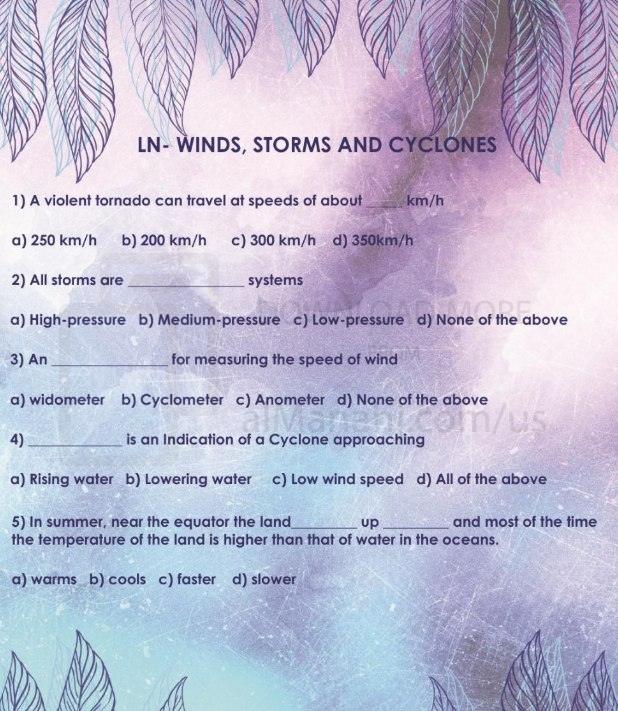| You are here: Almanahj Website ⇒ American curriculum ⇒ 7th Grade ⇒ Physics ⇒ Term 1 | ||
|---|---|---|
Worksheet about Natural Disasters | ||
|---|---|---|
| Subject: Physics | ||
| 7th Grade | ||
| Term 1 | ||
| Year: 2023/2024 | ||
| Size: 1.1MB | ||
| Number of clicks: 63 | ||
| Publish date:November 11, 2023 | ||
| Added by: Eman | ||
| Last download date: 2024-08-22 06:40:42 | ||
| Updated by: Eman9966 on 2023-11-12 03:39:12 | By: theodor anaah4 | |
| File info: Natural disasters are sudden and violent events caused by natural phenomena that can cause extensive damage to life and property. They can occur anywhere in the world and can have a devastating impact on communities, economies, and ecosystems. Types of Natural Disasters There are many different types of natural disasters, but some of the most common include: Earthquakes: Earthquakes are caused by the movement of tectonic plates. They can cause shaking, ground rupture, landslides, and tsunamis. Volcanic eruptions: Volcanic eruptions occur when molten rock, ash, and gas are ejected from a volcano. They can cause lava flows, pyroclastic flows, ash clouds, and lahars. Hurricanes and typhoons: Hurricanes and typhoons are large, rotating tropical storms that can cause strong winds, heavy rain, flooding, and storm surges. Floods: Floods occur when an area of land is submerged in water. They can be caused by heavy rain, storm surges, snowmelt, or dam failures. Wildfires: Wildfires are uncontrolled fires that spread through vegetation. They can be caused by lightning, human activity, or drought conditions. Landslides: Landslides are the movement of large amounts of rock, soil, or debris down a slope. They can be caused by earthquakes, heavy rain, or human activity. Impacts of Natural Disasters Natural disasters can have a devastating impact on communities, economies, and ecosystems. They can cause loss of life, property damage, displacement, economic disruption, and environmental damage. Mitigation and Preparedness There are a number of things that can be done to mitigate the impacts of natural disasters. These include: Building codes: Building codes can be used to ensure that buildings are designed to withstand natural disasters. Early warning systems: Early warning systems can provide advance warning of impending natural disasters, giving people time to evacuate or take other protective measures. Disaster preparedness: Disaster preparedness involves developing plans and procedures for responding to natural disasters. This includes identifying evacuation routes, establishing communication systems, and stockpiling supplies. Risk reduction: Risk reduction involves taking steps to reduce the likelihood of natural disasters occurring or to reduce their impact. This can include measures such as deforestation, soil erosion control, and flood control. Recovery The recovery from a natural disaster can be a long and difficult process. It involves rebuilding infrastructure, providing assistance to those affected, and restoring livelihoods. Conclusion Natural disasters are a serious threat to communities around the world. By understanding the causes and impacts of natural disasters, we can take steps to mitigate their impacts and build more resilient communities. | ||
| Downloading link Worksheet about Natural Disasters |
|---|
|
1699683762.pdf
The file is being prepared for download
|
| File images |
|---|
 |